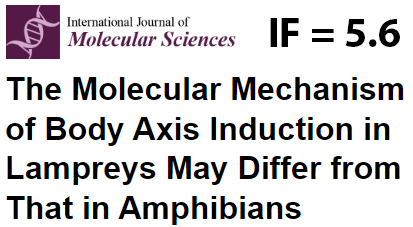Press-room / news / Science news /
The molecular mechanism of body axis induction in jawless vertebrates may differ from that described in gnathostomes
A significant proportion of modern ideas about the molecular mechanisms of body axis induction and differentiation of vertebrate embryos are based on studies of classical laboratory model objects - fishes, amphibians and mammals - that belong to only one of the two major clades of extant vertebrates - gnathostomes. In these animals, genes of Noggin family have been described as key embryonic inducers of the main body axis.
In order to assess the conservatism of the induction mechanism in different evolutionary lines of vertebrates, the Laboratory of Molecular Basis of Embryogenesis carried out studies on the functional activity of Noggin genes in the lamprey as a representative of another, evolutionarily oldest group of vertebrates – cyclostomes (jawless). It turned out that despite the conservatism of the functional properties of the studied genes in experiments with amphibians, in whose embryos the lamprey Noggins are able to induce complete secondary body axes, a similar effect was not observed in the lamprey embryos themselves. These results may indicate differences in the mechanisms of major axis induction between gnathostomes and agnathans, opening new perspectives for research into the fundamental basis of this process.
The results are published in International Journal of Molecular Sciences.

Figure 1. Injection of lamprey nogginB mRNA into clawed frog (Xenopus laevis) embryos induces development of a complete secondary body axis containing forehead structures and eyes (A, B), while similar injections of nogginB mRNA into river lamprey (Lampetra fluviatilis) embryos. do not cause such induction (C, D). Induction of secondary body axes in lampreys is possible, but has only been observed upon injection of wnt8a mRNA (E, F).
february 26


